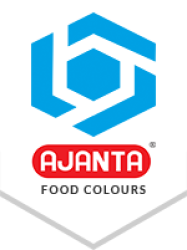France, located in Western Europe, is renowned for its rich history, culture, and diverse landscapes. Bordered by Belgium, Luxembourg, Germany, Switzerland, Italy, Spain, and the Mediterranean Sea, France boasts a strategic geographical position that has contributed to its economic significance over centuries.
France has a varied manufacturing sector that produces goods in different domains such as pharmaceuticals, cosmetics, beverages, food processing, and more. Manufacturing industries rely heavily on the intricate assembly of numerous components to create finished products. Each component plays a crucial role in the functionality, durability, and appeal of the final item. Among these components, one of the most essential is colour.
Colour serves as a powerful tool for manufacturers, influencing consumer perceptions, brand identity, and product differentiation. The choice of colour can evoke specific emotions, convey messages, and even influence purchasing decisions. In industries such as foods and cosmetics, colour plays a pivotal role in shaping consumer preferences and driving sales. France imports colours from other countries such as India, Germany, Italy, and the United States to meet its colour needs.
France Industries Where Colours Play a Vital Role
In France, several industries rely heavily on colours to enhance their products' appearance. Here are some key sectors where colours play a vital role:
Food and Beverages Industry
In the food and beverages industry in France, manufacturers often face challenges when choosing the right colours for their products. They need colours that meet quality standards and stay stable during production and storage. Synthetic colours come to the rescue, offering consistent quality, stability, and a wide range of vibrant shades. These colours meet regulatory requirements while making food and beverages visually appealing. Using synthetic colours ensures consistency in products, which builds product recognition and consumer trust, ultimately boosting sales. In France, many suppliers buy colourants in bulk from other countries and sell them to various businesses. Some sell under the original brand name, while others create their own labels. Major manufacturing hubs for the food and beverages industry in France include regions like Île-de-France (especially Paris), Nouvelle-Aquitaine (Bordeaux), and Auvergne-Rhône-Alpes (Lyon). These areas see significant production due to factors like infrastructure, resource access, and market proximity. The revenue of the Food & Beverages market of France is projected to reach US$15.61 million in 2022, with an expected annual growth rate (CAGR 2022-2027) of 12.49%, resulting in a projected market volume of US$31.19 million by 2027.
Cosmetics Industry
One of the challenges faced by France cosmetics manufacturers is selecting the right colours for their products. Colours such as shades, stability, etc, can affect the quality, appeal and safety of cosmetics. Synthetic colours are the solution to this problem, as they offer many benefits for cosmetics manufacturers. Synthetic colours are more stable, consistent and versatile than natural colours. They can create a wide range of shades and effects that suit different skin tones and preferences. Synthetic colours are also more cost-effective and eco-friendly, as they reduce the need for animal testing and harvesting of natural resources. By using synthetic colours, cosmetics manufacturers can boost their sales and brand reputation, as they can offer more attractive, innovative and reliable products to their customers. France is one of the leading countries in the cosmetics industry, with many manufacturing industries located in Paris, Lyon, Marseille and Bordeaux. In 2024, the cosmetics market in France is projected to reach US$2.81 billion, with an annual growth rate of 2.07% from 2024 to 2028.
Pharmaceuticals Industry
Pharmaceutical manufacturers in France face challenges when choosing colours for their products, needing to ensure top quality and stability. Synthetic colours emerge as a solution to these issues, offering consistent quality and stability compared to natural alternatives. By using synthetic colours, pharmaceutical companies can easily distinguish between different medicines, aiding both production and use. Additionally, these colours enhance the visual appeal of pharmaceuticals, boosting product recognition and customer trust, which leads to increased sales and market presence. In France, many large distributors import colourants from other countries. Some distributors sell these colourants under the brand name they bought them from, while others create their own labels and sell them under their own branding. Most pharmaceutical manufacturing hubs are located in regions like Île-de-France, Auvergne-Rhône-Alpes, and Pays de la Loire, benefiting from strong infrastructure and expertise. The pharmaceutical market in France is projected to reach US$27.01 billion by 2024, with an annual growth rate of 5.74% (CAGR 2024-2028), reaching a market volume of US$33.76 billion by 2028.
Chocolate Industry
Chocolate manufacturers in France face many challenges when it comes to choosing the right colours for their products. They have to consider the perfect shade of colour, the quality, the stability, and the appeal of their chocolates. One way to overcome these challenges is to use synthetic colours. Synthetic colours offer many benefits for chocolate manufacturers. They are more consistent, more durable, and more versatile than natural colours. They can create a wide range of colours that suit different occasions, seasons, and preferences. Synthetic colours can also boost the sales of chocolate manufacturers by making their products stand out from the competition and attract more customers. Synthetic colours are safe for consumption, especially for children, as they are tested and approved by the authorities. Therefore, synthetic colours are the solution for chocolate manufacturers in France who want to create colourful and delicious chocolates. Colourant sellers in France buy colourants from local or foreign suppliers at low prices. They sell these colourants to different industries like food and beverages, beauty, and medicine, at higher prices, making money on each sale. They may also give discounts or rewards to get customers. By managing their stock well and giving good customer service, colourant sellers can grow their sales and profits. Ajanta Food Colours is a reliable maker of food colourants that offers good products at cheap prices. Many sellers and distributors pick Ajanta because they like its quality and price. Most of the chocolate manufacturing industries in France are in areas like Paris, Lyon, and Bordeaux, where they have access to good ingredients and a skilled workforce, which helps them succeed in the market. Revenue in the Confectionery market is US$19.66bn in 2024. The market will grow by 3.32% (CAGR 2024-2028) every year.
Animal Feed Industry
Animal feed manufacturers in France face many problems when choosing the right colours for their products. Natural colours can change in quality and brightness, which can affect how the food looks, natural colours can also be hard and costly to get, making them unreliable and pricey. Synthetic colours can solve these problems, as they have steady quality and brightness and come in many different shades. By using Synthetic colours, animal feed manufacturers can make their products look better and more appealing to customers. This can help them sell more and build a strong brand in the market. Synthetic colours can also help customers tell apart different kinds of animal feed, such as poultry, swine, or cattle. Animal feed is a big part of France’s economy, as it helps produce meat, milk, eggs, and other animal products. In France, animal feed makers are spread across the country, but some areas are more important. The areas of Brittany, Pays de la Loire, and Nouvelle-Aquitaine have many animal feed factories. These areas have advantages like easy access to farm materials, closeness to animal farms, and good transport links, making them perfect places for such businesses. The France animal feed market is worth US$7.936 billion in 2022 and will grow by 1.70% each year to reach US$8.927 billion in 2029.
Cultural Preferences of Colours in France
The colours used in products can influence how consumers perceive them in France. For example, red is a colour of passion and energy, so it is often used for food and drinks, especially wines and sauces. Blue is a colour of trust and dependability, so it is often used for beauty products, such as cosmetics and skincare. Chocolate manufacturers may use warm, natural colours like brown and gold to make their products look more tempting and luxurious. French brands use these colours to attract customers and make their products stand out. By knowing how colours affect consumer psychology, brands can increase their sales and become leaders in their markets.
Regulatory Guidelines on Colours in the French Market
Regulatory guidelines on colours in products like food, beverages, pharma, cosmetics, etc., in France are crucial for ensuring safety and quality. The primary governmental body overseeing this is the French Agency for Food, Environmental and Occupational Health & Safety (ANSES) and the Directorate General for Competition, Consumer Affairs and Fraud Control (DGCCRF). These guidelines dictate which colours are permitted for use, their maximum allowed concentrations, and any labeling requirements. By adhering to these regulations, manufacturers can ensure their products are safe for consumption and use. This oversight helps protect consumers from potential health risks associated with harmful or unauthorized colour additives. Manufacturers need to comply with these guidelines to avoid legal penalties, safeguard their reputation, and maintain consumer trust. Overall, these regulatory measures aim to enhance consumer safety and confidence in the products available in the market.
Ajanta Food Colours is a colourant manufacturer with over 75+ years of experience. It is a global leader in producing high-quality colours. Ajanta exports its colours to many European countries, including France, Belgium, Spain, Luxembourg, Germany, Switzerland, and more. The company meets the demand for colours in the French market.
Ajanta Colours has earned various certificates that attest to the quality and safety of its colours. It has an FDA certificate, an ISO 9001:2015 certificate for its quality management system, a HACCP certificate for its food safety system, a HALAL certificate for its compliance with Islamic dietary laws, a KOSHER certificate for its compliance with Jewish dietary laws, etc.
France has a vibrant and innovative entrepreneurial scene, with many support structures for startups, such as investors, accelerators, incubators, and research institutions. However, launching a new product in this competitive market is not easy. Startups need to differentiate their products from the existing ones and make them appealing to customers. Ajanta Food Colours helps French startups to create products that look attractive and have different shades. This enhances their product visibility and ultimately sales.
Ajanta Food Colours is a great choice for France businessmen who want a trustworthy colours exporter. The company offers many benefits, such as competitive prices and on-time delivery, ensuring cost-efficiency and quick access to products. Their custom solutions and technical support improve the customer experience. Ajanta Food Colours has a wide range of colours and applications for different needs in the market. The company's consistent quality and performance make its products reliable.
To know more about Ajanta Food Colours and its Supra range of colours, or for any other information, please contact us today!





